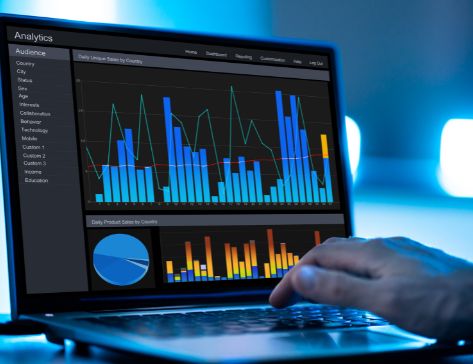
The Evolution of Marketing Analytics: From Basic Metrics to Predictive Intelligence
Marketing analytics evolution has fundamentally transformed how businesses understand customer behavior and optimize their marketing strategies. From the early days of simple spreadsheets to today’s sophisticated AI-powered platforms, the journey of marketing analytics represents one of the most significant shifts in business intelligence. This comprehensive guide explores this evolution, highlighting key milestones, current capabilities, and future directions that will shape marketing decision-making.

The Historical Development of Marketing Analytics
The concept of marketing analytics began with basic data collection methods in traditional advertising. Businesses relied on simple metrics like sales figures, customer surveys, and basic demographic information to guide their marketing decisions. The transformation of marketing analytics accelerated dramatically with the digital revolution, introducing new channels and data sources that created both opportunities and challenges for marketers worldwide.
In the 1990s and early 2000s, web analytics emerged as websites became central to business operations. Tools like Google Analytics provided insights into website traffic, user behavior, and conversion rates. This period marked the first significant shift toward data-driven marketing decisions, though the analytics capabilities were still relatively limited compared to today’s standards.
The Digital Analytics Revolution
The mid-2000s witnessed an explosion in digital marketing channels, each generating vast amounts of data:
- Social Media Analytics: Platforms like Facebook and Twitter introduced new metrics around engagement, reach, and audience demographics
- Email Marketing Metrics: Open rates, click-through rates, and conversion tracking became standard
- Search Engine Marketing: Keywords, impressions, and cost-per-click data informed SEO and PPC strategies
- Mobile Analytics: App usage, location data, and mobile-specific behaviors added new dimensions
This proliferation of channels created the challenge of data silos, where information existed in separate platforms without integration. The need for unified marketing analytics became apparent as marketers struggled to connect these disparate data sources to understand the complete customer journey.
The Rise of Integrated Marketing Analytics Platforms
The 2010s saw the development of comprehensive marketing analytics platforms designed to solve the data fragmentation problem. These platforms offered:
- Cross-channel data integration
- Attribution modeling to understand touchpoint effectiveness
- Customer journey mapping
- Unified reporting dashboards
- Real-time analytics capabilities
This integration allowed marketers to finally understand how different channels worked together and affected the overall customer experience. Marketing mix modeling and multi-touch attribution became essential techniques for allocating budgets effectively across channels based on their actual contribution to conversions.
Key Metrics That Transformed Marketing Decision-Making
As marketing analytics matured, the focus shifted from vanity metrics to business-impacting KPIs:
- Customer Lifetime Value (CLV): Understanding the long-term value of customer relationships
- Customer Acquisition Cost (CAC): Measuring the efficiency of marketing spend
- Return on Ad Spend (ROAS): Evaluating the direct revenue impact of advertising
- Conversion Rate Optimization (CRO): Improving the efficiency of marketing funnels
- Churn Rate: Identifying and addressing customer retention issues
These metrics helped transform marketing from a cost center to a revenue driver within organizations, elevating the role of marketing leaders in business strategy discussions.
The AI and Machine Learning Revolution in Marketing Analytics
The current era of marketing analytics is defined by artificial intelligence and machine learning capabilities that have introduced predictive analytics for mobile marketing and other channels. These technologies have enabled:
- Predictive Analytics: Forecasting customer behaviors and campaign outcomes
- Prescriptive Analytics: Automated recommendations for marketing optimization
- Personalization at Scale: Tailoring content and offers to individual preferences
- Automated Segmentation: Discovering meaningful customer groups through pattern recognition
- Anomaly Detection: Identifying unusual patterns that require attention
These capabilities have dramatically increased the speed and accuracy of marketing decisions while reducing the manual analysis burden on marketing teams. AI-powered tools can now process and derive insights from data volumes that would be impossible for human analysts to handle effectively.
Real-Time Analytics and Activation
The ability to analyze and act on data in real-time represents another significant evolution in marketing analytics. Modern platforms offer:
- Real-time dashboards showing current performance
- Automated campaign adjustments based on performance triggers
- Dynamic content optimization
- Instant personalization based on user behavior
- Continuous testing and optimization
This real-time capability has compressed the insight-to-action cycle from weeks or days to minutes or seconds, allowing marketers to capitalize on opportunities and address issues before they impact business results significantly.
Privacy Challenges and Ethical Analytics
The evolution of marketing analytics has coincided with growing privacy concerns and regulations like GDPR and CCPA. Modern marketing analytics must balance effectiveness with ethical considerations:
- Consent-based data collection
- Anonymous and aggregated analysis where possible
- Transparent data practices
- Data minimization principles
- Privacy-preserving analytics techniques
These requirements have pushed the industry to develop more sophisticated approaches that respect user privacy while still delivering valuable insights. First-party data strategies have become increasingly important as third-party cookies and other tracking mechanisms face restrictions.
Implementing Advanced Marketing Analytics: A Step-by-Step Approach
For organizations looking to leverage the full potential of modern marketing analytics, consider this implementation framework:
- Audit Your Current Analytics Capabilities: Assess existing tools, data sources, and team skills
- Define Clear Business Objectives: Identify specific questions analytics should answer
- Develop a Data Strategy: Plan for data collection, integration, quality, and governance
- Select Appropriate Tools: Choose platforms that align with your needs and scale
- Implement Tracking and Integration: Deploy necessary tags, APIs, and data pipelines
- Build Reporting Infrastructure: Create dashboards and reports for different stakeholders
- Develop Analysis Frameworks: Establish processes for deriving insights from data
- Create Activation Mechanisms: Ensure insights lead to concrete marketing actions
- Measure Impact: Track how analytics-driven decisions affect business outcomes
- Continuously Improve: Regularly update your analytics approach as capabilities evolve
Pro Tip: Focus on Actionability
The most sophisticated analytics are worthless if they don’t drive action. Always design your analytics program with clear paths to marketing decisions and campaign optimizations.
The Future of Marketing Analytics
Looking ahead, several emerging trends will shape the continued evolution of marketing analytics:
- Unified Marketing Measurement: Combining attribution and marketing mix modeling
- Augmented Analytics: AI assistants that guide marketers through data interpretation
- Automated Insights: Systems that proactively identify opportunities and issues
- Cross-Platform Identity Resolution: Better tracking of individuals across devices and channels
- Advanced Push Notification Analytics: Leveraging tools like push notification intelligence platforms for engagement optimization
These advancements will continue to make marketing analytics more accessible, actionable, and valuable for organizations of all sizes.
Embracing the Analytics-Driven Marketing Future
The evolution of marketing analytics from basic metrics to sophisticated AI-powered systems represents one of the most significant transformations in modern business practice. Organizations that embrace these capabilities gain substantial competitive advantages through more efficient spending, better customer experiences, and faster adaptation to market changes.
As we look to the future, the line between analytics and marketing execution will continue to blur, with automated systems increasingly making real-time decisions based on continuous data analysis. The most successful marketers will be those who combine analytical thinking with creative vision, using data to inform rather than replace human judgment.
By understanding this evolution and implementing a strategic approach to marketing analytics, businesses can ensure they remain at the forefront of data-driven marketing excellence in an increasingly competitive landscape.


